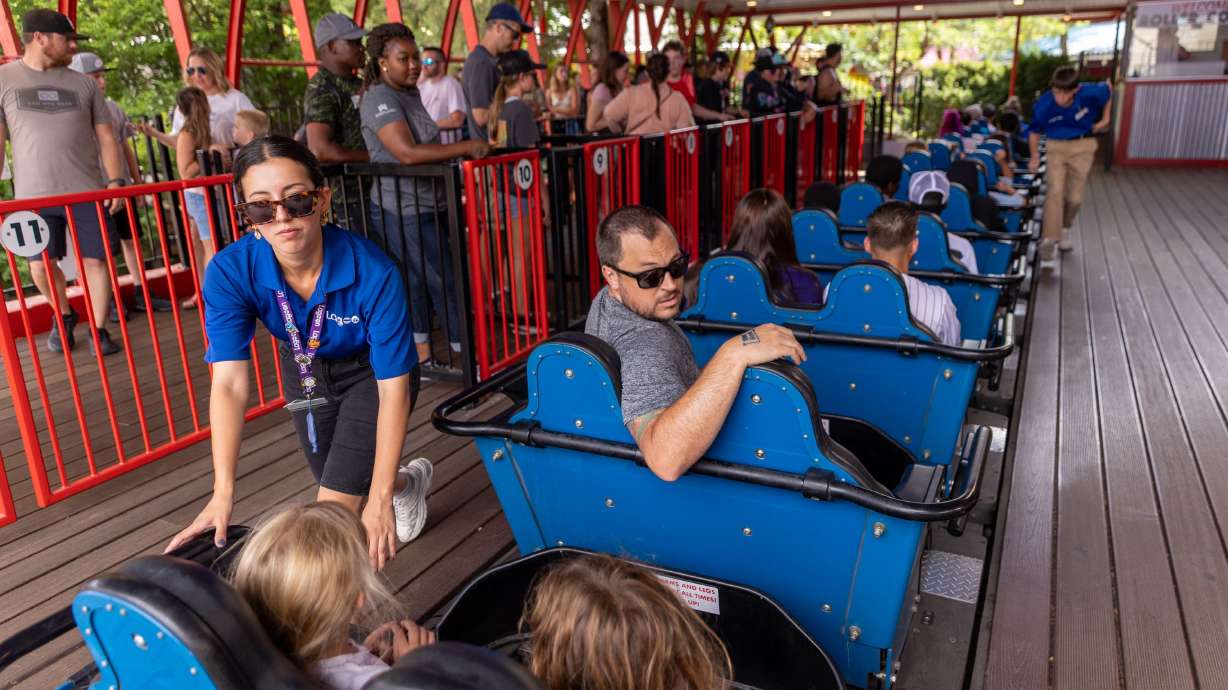Estimated read time: 5-6 minutes
This archived news story is available only for your personal, non-commercial use. Information in the story may be outdated or superseded by additional information. Reading or replaying the story in its archived form does not constitute a republication of the story.
WASHINGTON — In spite of ongoing, record-high inflation and a U.S. economy that's showing signs of slowing, a 2½-year journey to recover 22 million jobs lost amid the unprecedented economic upheaval wrought by the COVID-19 pandemic is over.
National job growth ballooned by 528,000 positions in July, far exceeding expectations and helping drive overall employment back to levels not seen since February 2020.
A Friday report from the U.S. Labor Department found that job increases were widespread and led by gains in leisure and hospitality, professional and business services, and health care. Both total nonfarm employment and the unemployment rate, which dropped to 3.5% in July, have returned to their pre-pandemic levels, according to the new federal data.
While inflation hit another 40-year high in June, with the prices of goods and services up an average 9.1% from a year ago, and the U.S. GDP declining over the last two quarters, typically the indicator of the beginning of a recession, July job growth came in at more than double the 250,000 that many economists were expecting.
The surprisingly robust employment numbers are likely to incite the Federal Reserve to continue its streak of hefty benchmark interest rate hikes as the monetary body struggles to strategically tamp down the economy and quell inflation.
"If the U.S. economy is in a recession, no one seems to have told employers," Sarah House, a senior economist at Wells Fargo in Charlotte, North Carolina, told Reuters. "We suspect this data will give the Fed the confidence it needs to push ahead aggressively with its fight against inflation."
Some large U.S. corporations have recently announced plans to reduce their workforces in the coming months, including Walmart, Tesla, Ford and Microsoft, but right now the math is far in favor of employees who saw their year-over-year hourly earnings increase by 5.2% in July in the face of a labor sector that has almost two openings for every currently unemployed worker.
While overall U.S. employment returned to pre-pandemic levels in July, Utah has been far ahead of the national curve and regained all of its pandemic-related job losses by December 2020 after hitting an employment low in April of that year as pandemic restrictions crushed business and economic activity.
On Friday, Mark Knold, Utah Department of Workforce Services chief economist, said Utah's healthy economy and a younger-than-average workforce helped the state recover from pandemic impacts faster than the rest of the nation but faces an ultra-tight labor market that's relying on drawing new workers to the state to fill outstanding jobs.
"With our 2% unemployment and 4.5% job growth, it's very difficult to keep up," Knold said. "The people filling jobs fueled by that growth are coming from Utah's in-migration. We're getting labor from outside of the state that never hit our unemployment rates because they come here already employed."
Knold said the national workforce is up against a demographic shift that's seeing older workers vacating jobs at a rate that's far outpacing the number of younger potential employees available to fill empty positions.
"We're seeing a huge quantity of older workers, Baby Boomers, leaving the labor force without an equal number of younger workers coming in behind them," Knold said. "And the group of potential workers 16 and older is not really getting bigger. There may be a bit of growth in the next five years, but then it will start to decline."
Knold said the labor demographic dilemma is being exacerbated by continued high levels of consumer spending that's pushing companies to produce more, but without the labor to keep pace with demand. So, even though overall U.S. employment is back to pre-pandemic levels, its still falling short of feeding the needs of a still-hot economy.
"Usually, recessions are driven in part by consumers pulling back on their spending," Knold said. "And, while there's a little bit of that going on, we're still in conditions where the amount of desire for goods and services isn't being met by production. And that won't be solved until we see more recovery in workforce participation rates."
Knold noted that, per the Labor Department's report on Friday, the workforce participation rate for July was 62.1% down from its pre-pandemic level of 63.4%. That difference, Knold said, helps underscore the current labor imbalance.
"To get back to pre-pandemic participation rates will take around 4 million workers," Knold said. "But instead, we're leaking off workers."
Knold said the dearth of available workers has driven up wages in the state much more significantly than the national average with average hourly earnings for Utah employees up by 9.5% year-over-year in March, the most recent available data.
Utah's iconic Lagoon Amusement Park has shared the challenges of thousands of Beehive State businesses over the past 2½ years, navigating closures and limited public access during the worst of the pandemic-driven restrictions that were followed immediately by critical labor issues amid the recovery.
Lagoon spokesman Adam Leishman said the park is thriving but has had to do some recalibrating to compete with other, staff-starved Utah businesses to fill its 3,000 or so seasonal positions.
"It's been a challenge, no doubt about it," Leishman said. "We've made some significant pay increases to many positions in order to compete with other employers."
Leishman also noted that a program to connect international college students to summer jobs at Lagoon that was suspended amid global travel restrictions is mostly back in place and the park is getting set to add additional staff members for its annual, and popular, Frightmares programming that's set to begin in September, ahead of the Halloween holiday.










